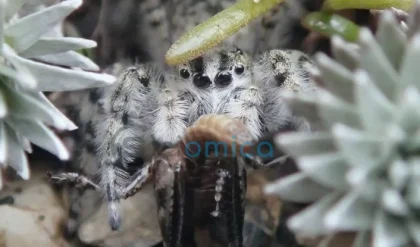
A recent study published in the June 19 issue of the journal Science reveals that two species of worms have remarkably maintained similar patterns in gene expression despite diverging from a common ancestor approximately 20 million years ago. The research, led by scientists at the University of Washington and the University of Pennsylvania, highlights the evolutionary coherence seen in gene activity between these organisms, specifically the soil-dwelling roundworms Caenorhabditis elegans and Caenorhabditis briggsae.
Dr. Robert Waterston, a professor of genome sciences at the University of Washington School of Medicine and a co-senior author of the study, expressed his astonishment at the degree of similarity in gene expression patterns. He noted that the conserved patterns are observed primarily in genes that are broadly expressed across various cell types, indicating that changes in such genes are generally more challenging. In contrast, genes that are limited to specific cell types seem more susceptible to evolutionary changes.
The study found that divergences in gene expression tended to occur in specialized cell types, particularly in areas associated with sensory functions and environmental responses. For instance, patterns related to fundamental functions such as muscle and gut cells remained conserved, while genes involved in neuronal functions displayed a tendency to diverge, perhaps indicating a need for adaptation to different environments as speculated by Christopher R. L. Large, the paper’s lead author and a postdoctoral fellow in genetics.
Researchers utilized a single-cell RNA sequencing technique to compare gene expression across all cell types in both worm species. This advanced method allowed the scientists to measure levels of messenger RNA (mRNA) at various embryonic development stages, offering insight into which genes were active at specific times. The worms present an ideal model for developmental studies due to their simplicity, transparency, and closer genetic relationship to humans, sharing around 20,000 genes.
Dr. Junhyong Kim, another co-senior author and director of the Penn Genome Frontiers Institute, emphasized the significance of being able to compare development at the single-cell level between two distinct but closely related organisms. While some degree of conserved gene expression was anticipated due to the similarity in body plans of the worms, the observation that changes in gene expression did not affect their overall body structure was unexpected.
Though the research outlines the variations in gene expression between the two species, the underlying reasons for these differences remain elusive. Dr. John Isaac Murray, the study’s third senior author, acknowledged the challenge of differentiating between evolutionary adaptations and random genetic drift that may have caused the observed changes.
This groundbreaking research provides a foundation for further exploration into unanswered questions regarding evolutionary biology, supported by funding from the National Institutes of Health and the National Science Foundation. The study not only contributes to the understanding of how organisms evolve at the gene expression level but also sheds light on the intricate relationship between genetics and development across different species.
Reference:
- Christopher R. L. Large, Rupa Khanal, LaDeana Hillier, Chau Huynh, Connor Kubo, Junhyong Kim, Robert H. Waterston, John I. Murray. Lineage-resolved analysis of embryonic gene expression evolution in C. elegans and C. briggsae. Science, Vol 388, Issue 6753 DOI: 10.1126/science.adu8249






